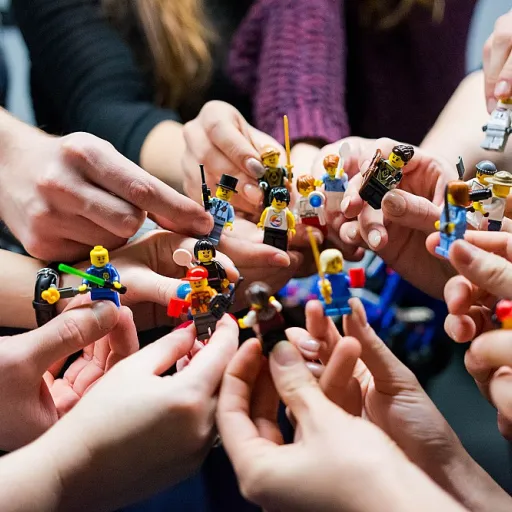
Understanding the strength deployment inventory
What is the Strength Deployment Inventory?
The Strength Deployment Inventory (SDI) is a well-established assessment tool designed to help individuals and teams gain insights into their core strengths, motives, and behaviors, especially in the context of relationships and conflict. By understanding your own motivational system and how it influences your actions, you can improve your approach to continuous learning and leadership development. The SDI assessment offers a structured way to identify what drives you and how your strengths show up at work, both in calm situations and during conflict.
How SDI Helps in Personal and Team Development
SDI goes beyond traditional personality assessments by focusing on motives and the deployment of strengths. It helps individuals and teams recognize their unique strengths portrait and how these strengths can be overdone, sometimes leading to misunderstandings or conflict. With this awareness, you can transform workplace relationships and improve collaboration. The inventory sdi framework encourages relationship intelligence, which is essential for effective teamwork and leadership.
- Motives drive behavior: SDI reveals the underlying motives that influence how you approach work, learning, and relationships.
- Strengths and overdone strengths: The tool highlights not only your core strengths but also how they may be perceived when overused, helping you avoid potential pitfalls.
- Conflict sequence: SDI maps out your typical response to conflict, providing valuable insights for conflict resolution and improved relationships strength within teams.
Understanding your SDI results is the first step in leveraging your strengths for continuous learning. As you progress, you will see how linking your personal strengths to learning goals and adapting your strategies can further enhance your development. For more on bridging the gap between knowledge and implementation, check out this resource on continuous learning insights.
Linking personal strengths to learning goals
Connecting Your Strengths to Learning Objectives
When using the Strength Deployment Inventory (SDI), one of the most valuable insights is understanding how your core strengths and motives influence your approach to learning. The SDI assessment helps individuals and teams identify their unique motivational system, which drives their behavior, relationships, and even their response to conflict. By recognizing these motives, you can align your learning goals with your natural strengths, making the process more engaging and effective.
- Motives drive learning: Your motives—whether focused on people, performance, or process—shape the way you approach new information and challenges. Awareness of these motives through the deployment inventory can help you select learning activities that resonate with your personality and strengths portrait.
- Personalized development: Linking your strengths to specific learning goals allows for a more tailored development plan. For example, if your SDI assessment reveals a strength in building relationships, you might thrive in collaborative learning environments or team-based projects.
- Overdone strengths: Sometimes, strengths can become overdone, especially under stress or conflict. Recognizing this pattern through the SDI can help you adjust your learning strategies and avoid pitfalls that may hinder progress.
- Improving relationships: Understanding your own motives and those of others can improve relationships within teams, supporting a more effective and harmonious learning environment.
By leveraging the insights from the SDI, you can set learning goals that not only play to your strengths but also address areas for growth. This approach supports leadership development, enhances relationship intelligence, and helps transform the workplace into a space where continuous learning thrives. For those interested in practical strategies to reinforce learning, check out this resource on mastering the irregular words list for effective continuous learning.
Adapting learning strategies based on strengths
Personalizing Learning Strategies with SDI Insights
Once you have a clear understanding of your motives and strengths through the strength deployment inventory (SDI), you can start to tailor your continuous learning journey. The SDI assessment reveals your motivational system, highlighting what drives you at work and in relationships. This awareness is crucial for selecting learning methods that align with your core strengths and personality.
For example, if your SDI profile shows that you thrive in collaborative environments, joining study groups or team-based projects can help you absorb new information more effectively. On the other hand, if your motives drive you toward independent achievement, self-paced online courses or individual research might be more suitable. The key is to match your learning strategies with your unique strengths portrait, making the process more engaging and sustainable.
- Leverage your strengths: Use your top strengths to tackle new topics, whether it’s analytical thinking, relationship building, or creative problem-solving.
- Address overdone strengths: Be mindful of how your strengths can become liabilities if overused. For instance, a strong drive for harmony might lead to avoiding necessary conflict in team learning situations.
- Adapt to conflict sequence: Recognize how you respond to challenges or disagreements during learning. Understanding your conflict sequence can help you resolve issues quickly and maintain momentum.
By applying SDI insights, you not only improve your own development but also enhance your ability to work within teams. This approach supports leadership development and helps transform workplace learning into a more effective, personalized experience. For those looking to deepen their journey from managing tasks to inspiring others, consider exploring how to move from manager to leader through continuous learning for further strategies on leveraging strengths in leadership roles.
Overcoming learning obstacles with self-awareness
Turning Self-Awareness Into Action During Challenges
Continuous learning is rarely a smooth journey. Obstacles like loss of motivation, misunderstandings in teams, or recurring conflict can slow progress. The Strength Deployment Inventory (SDI) offers practical insights to help individuals and teams overcome these hurdles by increasing self-awareness and understanding of personal motives and strengths.
- Recognize Overdone Strengths: Sometimes, a strength can become a weakness if overused. For example, a drive for leadership might turn into controlling behavior under stress. The SDI assessment helps you spot these patterns, so you can adjust your approach before they impact your learning or relationships.
- Understand Your Conflict Sequence: The SDI model highlights how motives shift during conflict. By knowing your conflict sequence, you can pause and reflect before reacting, leading to more effective conflict resolution and improved relationships within teams.
- Leverage Relationship Intelligence: Awareness of your motivational system and those of others helps transform workplace dynamics. When you understand what drives your colleagues, you can adapt your communication and collaboration, making it easier to work through challenges together.
- Use Insights for Personal Development: The SDI strengths portrait provides a clear picture of your core strengths and areas for growth. This awareness supports leadership development and helps you stay focused on your learning goals, even when facing setbacks.
By using the SDI deployment inventory as a tool for self-reflection, you can turn obstacles into opportunities for growth. This approach not only helps individuals but also improves relationships and drives better results for teams. The journey of continuous learning becomes more effective when you understand and manage your strengths, motives, and reactions during challenging moments.
Building stronger collaboration through strengths
Enhancing Team Dynamics with Relationship Intelligence
Effective continuous learning is not just about individual growth; it thrives when teams work together, leveraging their unique strengths. The Strength Deployment Inventory (SDI) assessment offers valuable insights into how motives and strengths shape the way people interact, especially in collaborative environments. By understanding the motivational system behind each team member’s actions, teams can transform workplace relationships and foster a culture of trust and development.
- Recognize diverse strengths: The SDI assessment helps teams identify the core strengths and motives that drive each member. This awareness supports more effective collaboration and helps avoid misunderstandings that can arise from different working styles.
- Navigate conflict constructively: Conflict is inevitable in any team. The SDI’s conflict sequence model provides a framework for understanding how individuals respond to conflict, allowing teams to approach disagreements with empathy and resolve issues before they escalate.
- Balance strengths and overdone strengths: Sometimes, a strength used excessively can become a liability. The SDI’s strengths portrait highlights when a strength is overdone, helping teams adjust their approach and maintain productive relationships.
- Improve relationships through awareness: Relationship intelligence, developed through SDI insights, enables team members to adapt their communication and leadership styles. This not only improves relationships strength but also drives better results in collaborative projects.
Teams that regularly use the deployment inventory to reflect on their dynamics can identify areas for leadership development and continuous improvement. By making SDI assessment a part of ongoing team development, individuals and teams build stronger collaboration, navigate conflict more effectively, and create a supportive environment where continuous learning can flourish.
Tracking progress and adjusting your approach
Turning Insights into Measurable Growth
Once you have a clear understanding of your strengths, motives, and potential overdone strengths from the SDI assessment, the next step is to make your development visible and measurable. Tracking progress is essential for continuous learning, especially when working in teams where relationships and conflict resolution play a big role.
- Set specific goals: Use your insights from the strength deployment inventory to define clear, actionable objectives. For example, if your strengths portrait highlights relationship intelligence, set a goal to improve collaboration in your team projects.
- Monitor your conflict sequence: Pay attention to how you react in challenging situations. Regularly reflect on your responses to conflict and adjust your approach to align with your core strengths and motives.
- Gather feedback: Ask colleagues or mentors for feedback on your development. Their perspective can help you identify blind spots and refine your strategies for leadership and teamwork.
- Document your progress: Keep a simple log or journal of your experiences. Note how your awareness of motives and strengths has helped you transform workplace relationships or resolve conflicts more effectively.
- Adjust your approach: As you gain more experience, revisit your SDI assessment results. Your motives and strengths may evolve, so adapt your learning strategies to stay aligned with your current development needs.
By consistently tracking your growth and making adjustments, you can ensure that your continuous learning journey remains relevant and impactful. This approach not only helps individuals but also supports teams in building stronger relationships and achieving better results together.












